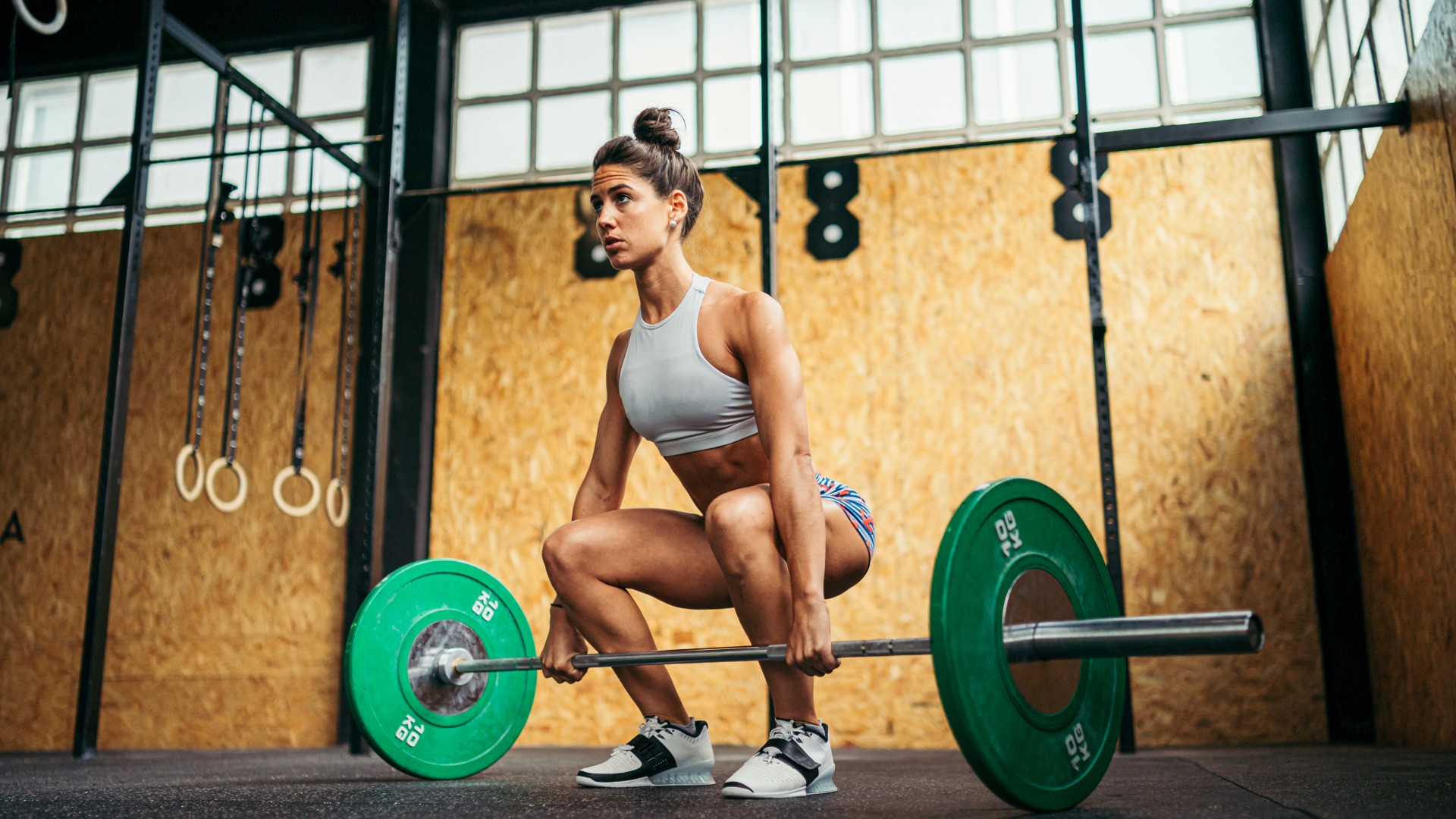
The human body is a pretty awesome and complex place. You probably know about muscles, bones, joints, tendons and ligaments already, but do you know anatomical muscle slings?
The sling systems refer to a network of tissues (fascia) that create a system around the body, connecting various muscle groups using chains, or slings, along and across the body. Think of it almost like a subway map.
However you enjoy exercising, knowing about the sling systems of the body could help you maximize your training efforts and results, increase fitness, build strength, stability, and muscle and improve athletic performance.
According to strength and conditioning coach Luiz Silva, here’s everything you need to know about anatomical sling systems.
What are the sling systems of the body?
Slings refer to a connection between muscle groups; there are four main sling systems in the human body, creating a network of fascia and muscles that recruit together. Many coaches, especially in the world of sports and athletes, will train athletes according to sling systems to improve the quality of movement in clients. Strengthening your sling systems can improve stability, strength, balance and power.
“We have the anterior oblique sling, posterior oblique sling, deep longitudinal sling and lateral sling systems,” explains Silva.
Sling systems are sometimes referred to as "myofascial slings" — a system of muscles, fascias and ligaments that interconnect to transmit forces during movement. Silva says: “These muscles may overlap or interconnect with other slings, depending on the movement performed, to produce a dynamic movement.”
When these muscles activate and recruit together, your body can coordinate, balance and stabilize properly during movement. If one muscle group becomes dysfunctional for whatever reason, whether it's due to under or overactivity or injury, this can impact other muscle groups and parts of the body.
That’s why we can experience muscular imbalances from training. For example, some rotator cuff injuries can originate from tight and overworked pectoral muscles and lower back pain can be a symptom of tight or weak hamstrings, glutes, or hip flexor muscles. Interconnected muscle groups must be trained to work well together to help you move and function properly.
What are the muscles in the 4 sling systems?
The fascial sling systems can be broken down as:
- Anterior oblique sling (AOS): The pecs and external and internal obliques connect with the opposite side adductor muscles through a fascia called the adductor-abdominal fascia. There are two slings (left pecs, abs to right adductors, and right pecs and abs with left adductors)
- Posterior oblique sling (POS): The latissimus dorsi, the opposite side gluteus maximus and the inter-connecting fascia called thoracolumbar fascia. This sling is also dual-sided
- Deep longitudinal sling (DLS): The erector spinae, multifidus, and hamstrings (the biceps femoris), connected via the thoracolumbar fascia to the calf
- Lateral sling (LS): The gluteus medius and minimus, tensor fascia latae, iliotibial band and adductors on the opposite side of the glutes.
Each sling system is responsible for its own set of movements or actions. Your anterior sling supports actions like running, walking, throwing and jumping and connects muscles diagonally through the front of the body from pecs to hips on both sides. Athletes looking to improve their performance in these types of sports can build more explosive and powerful muscles.
The posterior system connects muscles along the back of the body, including the lats, lower back and glutes. Training the muscles along this sling can include some rotation and agility style movement, but also lunges, hip hinge movements and squats.
The deep longitudinal sling also runs along the back body to include the deep spinal back muscles down to the gastrocnemius (calf muscles). Together, these muscles are important for stabilization and can be targeted in a variety of ways, including using some of the best core exercises.
Finally, the lateral system includes the glutes, tensor fascia latae and adductors, working to help stabilize the hips and pelvis during movement. Training these muscle groups improves balance and stability and helps prevent injury.
How do you train for each sling system?
“The approach to train the sling system is to think of the body as a whole unit of interconnected, and not isolated, muscles,” explains Silva. “When picking exercises, try to check the following boxes in this order:”
- Exercises that use two or more joints during their execution
- Exercises that flow or move in the direction of the sling you want to work
- Progressions for these exercises (difficulty of execution or change of direction, for example).
Silva recommends exercises like woodchops to train the anterior sling, single-leg deadlifts and rows to hit the posterior sling, deadlifts for the longitudinal sling and step-ups (and their variations) to target the lateral sling.
Exercises like reverse lunges and rotations hit both the anterior and posterior slings, gorilla rows help target the posterior and longitudinal slings, single-arm alternating kettlebell swings work the anterior and longitudinal muscles, and single-leg squats combined with an overhead press tap into the lateral and anterior slings.
Of course, these are just examples of exercises you could include, but your programming should look at your goals as a whole and be planned according to your training style and periodization plan.
Bottom line

“When we move, our body doesn’t activate a single muscle at each stage of the movement,” says Silva. “We also don’t just use one movement pattern. Moving is a combined action between different muscles, fascias and angles and requires a whole-body approach.”
Silva advises learning your sling systems to help you develop the right training plan for your goals, plus identify strengths and weaknesses in movement patterns. “You’ll be able to select the best exercises for the slings you want to work on to improve movement, and performance, reduce pain and improve quality of life through better functioning of your body,” he adds.
For example, sportspeople focusing on explosive training styles like running, throwing, jumping, or sprinting look primarily at the anterior and posterior sling systems.
If you’re unsure, working with a personal trainer, or strength and conditioning coach, or researching the slings and their corresponding exercises could help you program more intelligently.
The fascial sling systems are crucial for improving overall fitness and sports performance, whatever your ability level. Tapping into the sling systems could help you build strength, power, and muscle, become more flexible, mobile, and agile and improve functional fitness. If in doubt, always aim for exercises that reflect the movement pattern of the muscles within each sling.
In the video above, the anatomy of the body and highlighted muscles along the slings visually help exercisers to work out how this would look during movement and apply it to exercises.







